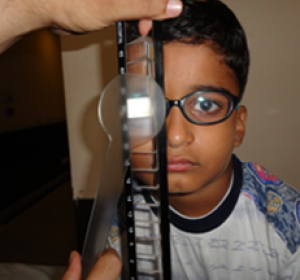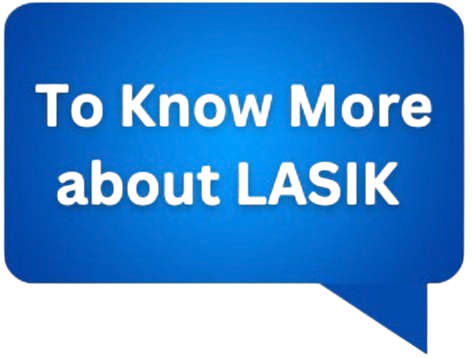Squint eye, also known as strabismus, is a condition where the eyes do not align properly and point in different directions. One eye may look straight while the other may turn inward, outward, upward, or downward. This misalignment can occur occasionally or all the time, and if left untreated, it can affect both vision and confidence. Modern eye care has made it possible to correct squint effectively through advanced treatments. For families seeking expert care, squint eye surgery in Delhi is one of the most reliable solutions available at leading centres like Vision Eye Centre.
Understanding Squint Eye
Squint eye is more than just a cosmetic concern—it can lead to vision problems such as lazy eye (amblyopia), double vision, and poor depth perception. It usually develops in childhood, but adults may also suffer due to injury, nerve weakness, or other eye conditions.
Key causes include:
-
Weakness in the eye muscles
-
Poor coordination between eye and brain
-
Uncorrected vision problems (like farsightedness)
-
Neurological issues or trauma
An eye squint specialist in Delhi evaluates each case thoroughly, using tests like vision check-ups, eye movement assessments, and sometimes imaging, to identify the underlying cause.
Types of Squint Eye
Squint eye can appear in different forms depending on the direction and frequency of the misalignment. Understanding these types helps in choosing the right treatment.
-
Esotropia: One or both eyes turn inward, often noticeable in children.
-
Exotropia: One or both eyes turn outward, which may become more visible when tired.
-
Hypertropia: One eye turns upward, while the other looks straight.
-
Hypotropia: One eye turns downward compared to the other.
-
Intermittent Squint: The misalignment appears only at certain times, like when stressed or fatigued.
-
Constant Squint: The misalignment is present at all times and requires urgent treatment.
Treatment Options for Squint Eye
Squint eye treatment is aimed at correcting the misalignment of the eyes and restoring proper vision. The choice of treatment depends on factors such as the patient’s age, type of squint, severity, and whether it is constant or intermittent. A detailed eye examination by an eye squint specialist in Delhi helps determine the best approach.
1. Glasses and Contact Lenses
Sometimes squint develops due to uncorrected refractive errors such as farsightedness (hyperopia). In these cases, prescribing glasses or contact lenses can correct vision and reduce strain on the eye muscles. For some patients, wearing corrective glasses alone may help the eyes align properly without further treatment.
2. Eye Exercises (Orthoptic Therapy)
Special exercises are recommended to improve muscle coordination and strengthen the weaker eye. These exercises are particularly effective for mild or intermittent squints. They train the brain and eyes to work together, improving focus and binocular vision. Regular follow-ups are necessary to track progress.
3. Patching (Occlusion Therapy)
In children, squint often leads to a condition called amblyopia or “lazy eye.” To prevent this, the stronger eye is covered with a patch for a few hours daily, forcing the weaker eye to function and develop normal vision. This is usually combined with glasses or exercises for better results.
4. Medication and Injections
In some cases, eye drops or special medications are used to relax certain muscles and reduce squint temporarily. Botulinum toxin (Botox) injections can also be given to weaken overactive muscles, allowing the eyes to realign. This is often considered when surgery is not immediately possible.
5. Squint Eye Surgery
When non-surgical methods are not enough, surgery becomes the most effective treatment. In this procedure, the surgeon adjusts the position of the eye muscles to achieve proper alignment. Modern techniques make this surgery safe and precise, with minimal downtime. Adults and children both can undergo squint eye surgery in Delhi at specialized centres like Vision Eye Centre.
6. Vision Therapy and Follow-Up Care
After the primary treatment, patients may require vision therapy sessions to maintain long-term results. Regular check-ups ensure that the eyes remain aligned and vision continues to improve.
In short, squint eye treatment is highly individualized. Early diagnosis and timely intervention improve the chances of complete correction, especially in children.
Squint Eye Surgery Procedure
When non-surgical treatments such as glasses, exercises, or patching are not enough, surgery is the most effective way to correct squint. The procedure is designed to realign the eye muscles so that both eyes point in the same direction.
Step-by-step overview:
-
Pre-Surgical Evaluation: The eye squint specialist checks the patient’s medical history, type of squint, and overall eye health. Tests like visual acuity, eye movement, and binocular vision are performed.
-
Anesthesia: For children, general anesthesia is used so they are asleep during surgery. Adults may have local anesthesia with sedation.
-
Muscle Adjustment: The surgeon makes a small incision on the surface of the eye to access the muscles. Depending on the type of squint, the muscle may be shortened, moved, or relaxed to restore balance.
-
Duration: The procedure usually takes 30–60 minutes, and most patients can return home the same day.
-
Recovery: Mild redness, soreness, or irritation is common for a few days. Patients are advised to use prescribed eye drops and avoid rubbing the eyes.
Modern techniques make squint eye surgery in Delhi highly safe and effective, giving patients both functional and cosmetic improvement.
Benefits of Squint Eye Treatment
Correcting a squint is much more than improving appearance—it plays a crucial role in enhancing both vision and confidence. Whether the treatment involves glasses, exercises, or squint eye surgery in Delhi, patients experience several long-term benefits.
1. Improved Vision and Eye Coordination
Squint prevents the eyes from working together, which may cause double vision or poor depth perception. Treatment restores binocular vision, allowing both eyes to focus on the same object. This makes everyday tasks like reading, driving, and playing sports much easier.
2. Prevention of Lazy Eye (Amblyopia)
Children with untreated squint are at high risk of developing amblyopia, also known as “lazy eye,” where the brain favors one eye over the other. Early treatment ensures that both eyes develop equally and prevents permanent vision loss.
3. Reduced Eye Strain and Headaches
When the eyes are misaligned, the brain struggles to process images, leading to headaches, fatigue, and eye strain. Realigning the eyes through treatment reduces these symptoms, improving comfort during work, study, or screen time.
4. Enhanced Confidence and Social Well-Being
For many patients, squint causes self-consciousness and affects self-esteem, especially in children who may face teasing. Correcting squint boosts confidence, helping patients interact more freely in school, work, and social environments.
5. Better Career and Academic Opportunities
Some professions—such as defense, aviation, or jobs requiring strong eyesight—require perfect vision. Treating squint increases eligibility for such career paths, while children benefit from improved concentration in academics.
6. Long-Term Eye Health
Proper alignment reduces unnecessary strain on eye muscles and nerves, lowering the chances of further complications. Patients who undergo squint eye treatment in Delhi at specialized centres like Vision Eye Centre often experience stable and long-term results.
In short, timely treatment not only corrects the eyes cosmetically but also enhances overall quality of life, making it one of the most rewarding decisions for patients and their families.
Why Choose Vision Eye Centre for Squint Eye Treatment in Delhi
When it comes to eye alignment problems, choosing the right hospital and specialist makes all the difference. Vision Eye Centre is among the most trusted places for squint eye treatment in Delhi, known for its advanced technology and highly experienced doctors.
Here’s why patients prefer Vision Eye Centre:
-
Expert Specialists: The centre has some of the best eye squint specialists in Delhi who are experienced in both simple and complex cases.
-
Advanced Technology: Modern diagnostic tools and surgical equipment ensure accurate assessment and precise treatment.
-
Customized Treatment Plans: Every squint case is unique, so doctors create personalized treatment plans for children as well as adults.
-
High Success Rate: With years of expertise, Vision Eye Centre has successfully treated thousands of squint patients with long-lasting results.
-
Comprehensive Eye Care: From diagnosis to post-surgery care, patients receive complete support under one roof.
For families looking for safe, reliable, and advanced solutions, Vision Eye Centre stands out as a trusted choice for squint eye surgery in Delhi.
Frequently Asked Questions
1. What causes squint eye?
Squint can be caused by weak eye muscles, poor coordination between the brain and eyes, uncorrected vision problems, or sometimes by injuries and neurological conditions.
2. Can squint be treated without surgery?
Yes, in many cases squint can be managed with glasses, eye exercises, patching, or medication. However, if these methods are not effective, surgery may be needed.
3. At what age should squint eye be treated?
Early treatment is best. Squint in children should be addressed as soon as it is detected to prevent lazy eye. However, adults can also benefit from squint treatment and surgery.
4. Is squint eye surgery safe?
Yes, modern squint eye surgery in Delhi is very safe and performed using advanced techniques. Most patients recover quickly and notice significant improvement in eye alignment.
5. How long does recovery take after squint surgery?
Recovery usually takes a few weeks. Mild redness or soreness may remain for a short period, but most patients return to normal activities within a few days.
6. Can squint come back after treatment?
In rare cases, squint may reappear, especially if not treated early. Regular follow-ups and vision therapy help maintain results.
7. Does squint treatment improve vision as well?
Yes, in most cases, squint treatment improves both alignment and vision. Children especially benefit as it prevents amblyopia.
For more information about Squint Eye Surgery in Delhi: Vision Eye Centre, please call at
(+91)-9711004422 or click here for free advice.


